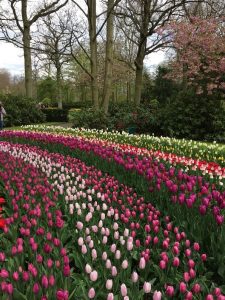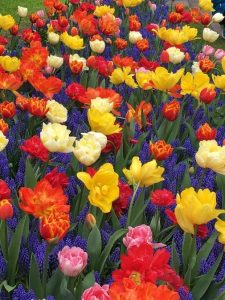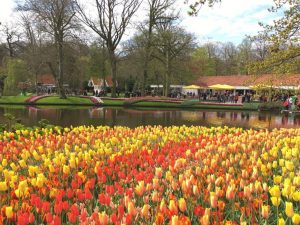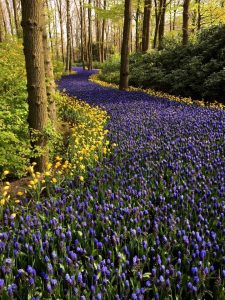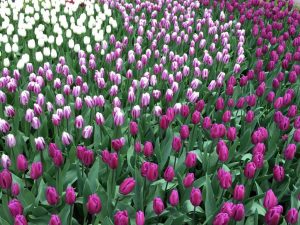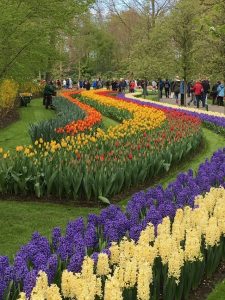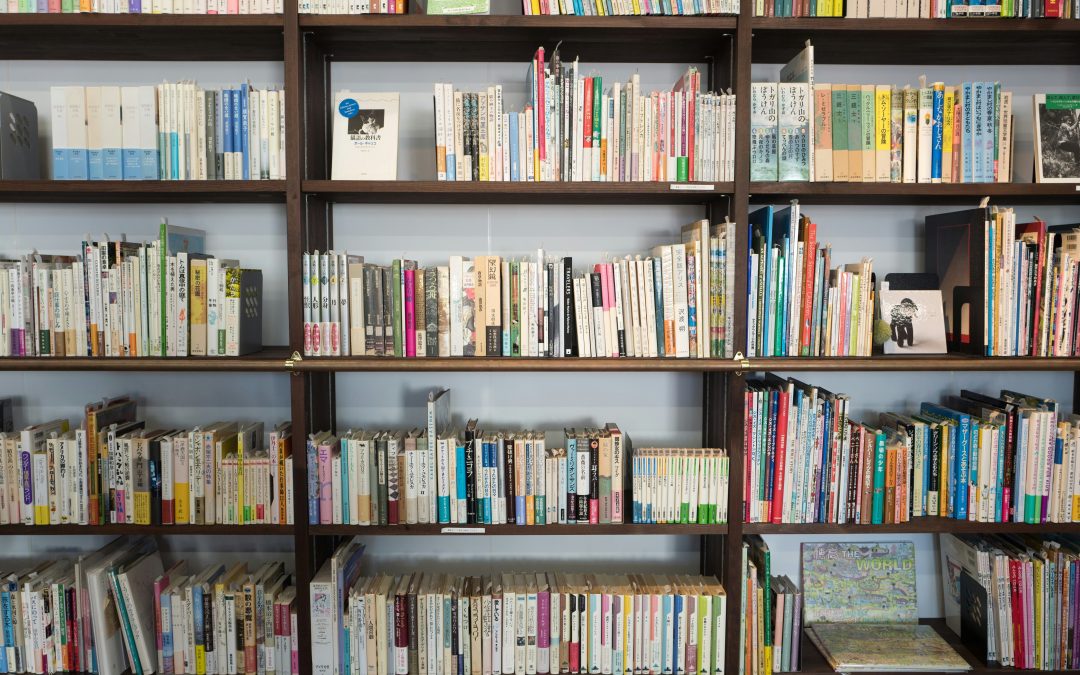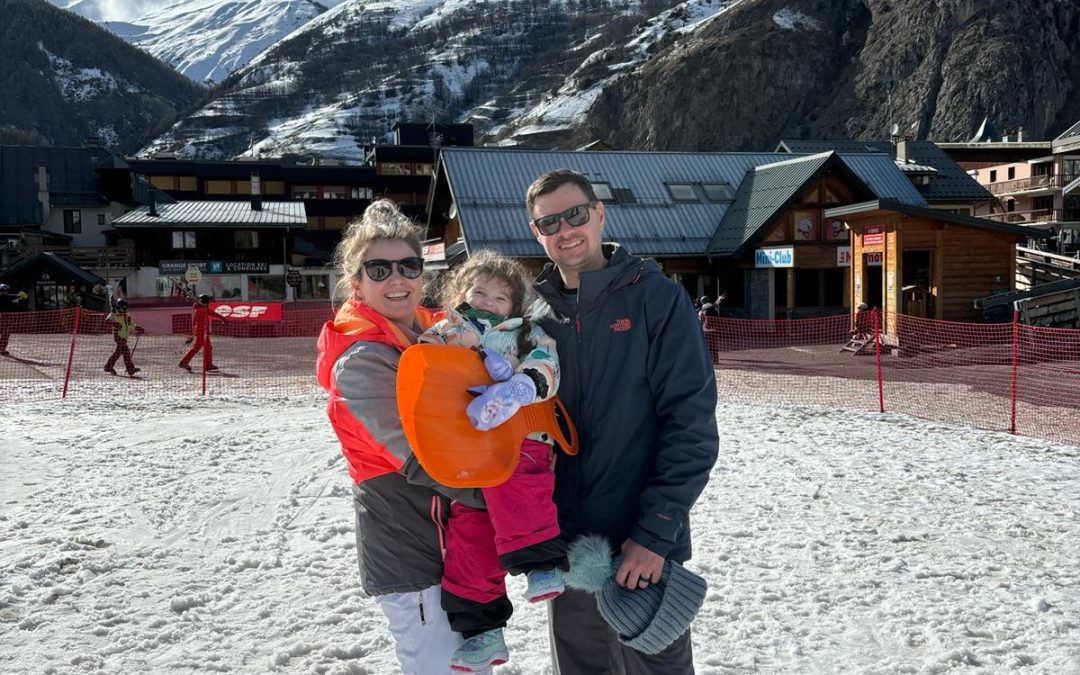By George de Bruin
If there is one place on earth where all rainbows meet up, it will surely be in Keukenhof, the Netherlands. This former kitchen garden (hence the name) has since the 15th century developed into one of the foremost flower gardens in the world. With more than 7 million bulbs – of which just more than 800 tulip varietals form part – it is indeed the place where the world’s rainbows get their inspiration from.
This year’s exhibition stretches from 23 March until 21 May. We were lucky to have visited the garden on 19 April – the week widely considered to be the best to experience its full impact.
Now I have to mention that Keukenhof does not only offer tulips. There are also hundreds of thousands of hyacinths in colours that range from the well-known dark blue, light blue and white to salmon-coloured and even buttery varietals. Small grape hyacinths (muscari) colour the world (there is even a scene where a myriad of cobalt blue grape hyacinths imitate a river that runs through a forest). And of course there are the daffodils, narcissi and other bulbs that complete the picture, as well as hundreds of other bulbs that are allowed to grow wildly, including Fritillaria meleagris or chequered lily.
Keukenhof’s secret for the extended flowering time is at the same time impressive as it is simple and no engineering trick. The gardeners employ what they call a lasagne method to plant the bulbs. According to this method, the bulbs are planted in three layers – the top layer flowers first and provides the first colour explosion. As soon as these have flowered and the dead flower heads are removed, the second layer has already broken through and is ready to parade their colour spectacle to viewers. And as soon as the second layer has flowered, the third colour splash follows. In this way the garden can keep its gates open for two whole months to take away people’s breaths.
The Internet says that a person can differentiate between 7 million colours. Believe me – Keukenhof challenges this fact, as I am sure that my eyes were forced to include an additional 500 000 colours! Every tulip imaginable is represented in the Tulpomania section of the garden; even one as green as grass and tulips with such fringed petals that they look like warthogs – we promptly started calling these “rafeltulpe” (fimbriated tulips).
And if that is not enough, the Willem Alexander Hall offers a collection of tulips that are quite extraordinary. This is where I saw the tulips any Rembrandt fan would recognise – those of his still lifes and which had lead to the great tulip crash of the 17th century.
Keukenhof is one of the places one simply has to see. There are a few hints that the prospective visitor has to take note of:
- Buy your ticket online. Then you can choose from three days and skip the line to enter. Keep an eye on the weather forecasts and then decide which day will suit you best.
- Go early. The earlier you go, the more tulips you can photograph without thousands of models posing around every corner and ruining your composition.
- Take your own food and drinks. There are many picnic opportunities (and the food and drinks available are quite expensive).
- Wear comfortable shoes. You will walk for miles on end, even if you don’t want to (your eyes will force you!).
- Take along an umbrella – even on sunny days, the Dutch weather may surprise you with a quick shower.
- Remember your camera, cell phone and anything that can take pictures.
There are still a few days left to visit Keukenhof. If you are in the area, go there.
- George de Bruin is a linguist at AfriForum and has just returned from an unforgettable European journey. Read in the next few weeks about the other places he has visited, including the Rijksmuseum, Aachen’s cathedral, the Eifel nature reserve in Germany and various other places.
Photos: George de Bruin and Dirk Scholtz


